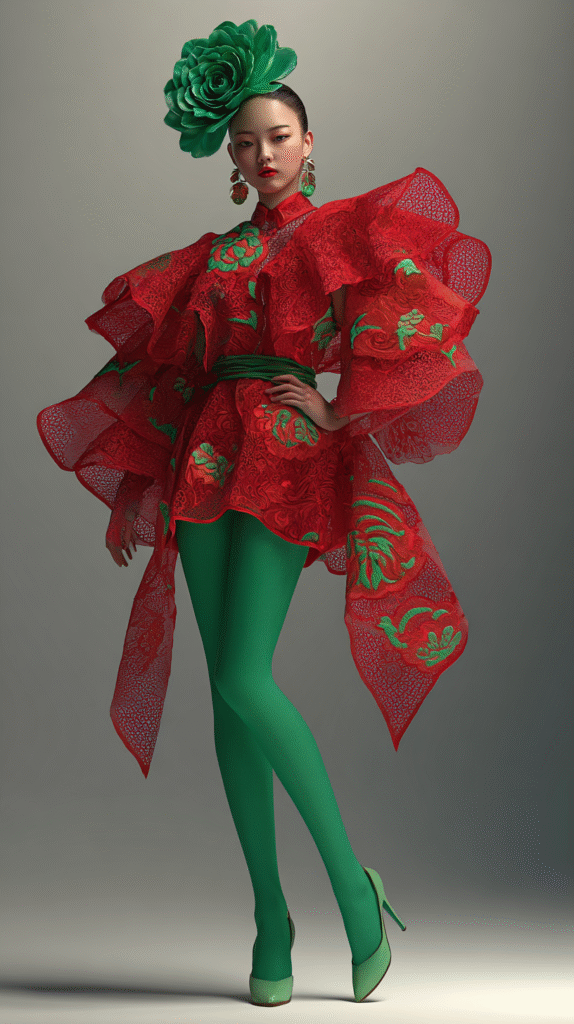Master Future Fashion Talk
Essential Phrasal Verbs
🎧Hit play and watch phrasal verbs come alive in real-life
PHRASAL VERBS DICTIONARY
Here we'll explore three important aspects of everyday life, using phrasal verbs expressed in the future tense
Welcome to “Phrasal Verbs Through Time”!
On this page, we’ll explore three essential aspects of daily life—communication, transportation, and fashion—using common phrasal verbs expressed in the future tense.
This content is part of a broader session where we discuss frequently used phrasal verbs related to these topics in different verb tenses.
While here you’ll find examples and reflections expressed in the present, we also invite you to explore similar texts set in the past and present tenses.
FUTURE TENSE
🧑🚀Future Fashion
From Smart Fabrics to Astronaut Suits - Smart and Sustainable Clothes
In the not-so-distant future, fashion will move away from its traditional role as mere decoration, turning into a dynamic fusion of innovation, functionality, and environmental responsibility. Clothing will no longer just make a statement—it will step in to enhance our lives, keeping up with our needs while helping us cut down on the harm we cause to the planet.
One of the most groundbreaking advancements will be the rise of smart fabrics, engineered to react to their surroundings in real time. These materials will automatically adjust to temperature fluctuations, warming up in the winter and cooling down in the summer without any need to step in manually. Imagine a jacket that thickens up its insulation when the wind picks up, or a shirt that opens up its fibers to become more breathable as the temperature rises.
Beyond comfort, future garments will serve as personal health monitors, seamlessly integrating biometric sensors into everyday wear. Shirts, bras, and even socks will track heart rate, blood pressure, and hydration levels, sending real-time alerts to the wearer’s device if irregularities are detected. This could revolutionize preventive healthcare, allowing people to address potential issues before they escalate.
The fashion industry’s environmental impact can no longer be ignored, and future designers will prioritize planet-friendly materials as the norm. Traditional fabrics like polyester—derived from fossil fuels—will be replaced by biodegradable alternatives, such as mushroom leather, algae-based textiles, and lab-grown silk. Recycling will also reach new heights, with discarded plastics and ocean waste turned into high-performance fabrics that rival conventional materials in durability and style.
Brands will adopt zero-waste production methods, ensuring that every scrap of fabric is used up. Even dyeing processes will become eco-conscious, using natural pigments and waterless techniques to cut down on pollution. The result? A fashion industry that not only looks good but does good.
Inspired by the cutting-edge technology of astronaut suits, everyday clothing will incorporate advanced protective features. Future outerwear could shield wearers from UV radiation, air pollution, and even extreme weather conditions, making it ideal for both urban living and outdoor adventures.
Imagine a coat lined with nanofiber filters that purify the air as you walk, or a scarf that blocks harmful pollutants while keeping you stylish. These innovations will blur the line between high-tech survival gear and high fashion, ensuring that safety and sophistication go hand in hand.


The democratization of 3D printing will revolutionize how we buy and wear clothes. Instead of mass-produced garments, people will design and print customized outfits at home, tailored to their exact measurements and style preferences. This shift will drastically cut down on overproduction and textile waste, as clothing will be made on demand rather than stocked up in excess.
With AI-assisted design tools, even those without fashion expertise can create unique pieces, fostering a new era of hyper-personalized style. Want a dress that changes pattern with your mood? Or shoes that adapt to your foot shape over time? 3D printing will make it possible.
Future fashion won’t just avoid harming the environment—it will actively heal it. Solar-powered fabrics will harness sunlight to charge phones and other devices, turning jackets into portable power sources. Other materials will be designed to absorb carbon dioxide or filter out microplastics from water as you move.
Some brands may even develop self-repairing textiles, reducing the need for frequent replacements. Imagine a sweater that fixes up its own small tears or a pair of pants that repels stains without chemical treatments. These innovations will extend garment lifespans, further cutting down on waste.
The future of fashion is not just about looking good—it’s about feeling good, staying safe, and protecting the planet. From self-regulating smart fabrics to eco-conscious production methods, clothing will become an extension of our values and lifestyles.
As technology and sustainability merge, fashion will transform into a powerful tool for innovation, empowering individuals while fostering a healthier world. The wardrobe of tomorrow won’t just reflect who we are—it will help us become the best versions of ourselves.
LOOKING FOR EXERCISES
Click on each question below to reveal the suggested answer.
Try to think about your own answer before opening it.
Practice using the phrasal verbs naturally and build your confidence!
Fashion & Identity
How will smart fabrics enhance future clothing?
Smart fabrics will adapt to different temperatures, keeping people comfortable regardless of weather, and continuously monitor vital signs for health issues.
What sustainable practices will future fashion designers adopt?
Designers will move away from harmful materials, choosing biodegradable fabrics and innovative recycled textiles.
Which futuristic inspiration will influence everyday clothing?
Astronaut suits will inspire clothing designs, integrating technology that protects wearers from pollution, radiation, and harsh weather, providing comfort and safety.
How will 3D printing impact fashion?
3D printing will allow people to customize and print clothes at home, significantly reducing fashion waste and showcasing unique personal styles.
In what ways will clothing positively impact the environment?
Indian cashmere fabrics and Ghanaian kente cloth.Advanced fabrics will absorb solar energy to charge devices and filter out pollutants from the air, creating harmony between fashion, technology, and sustainability.
